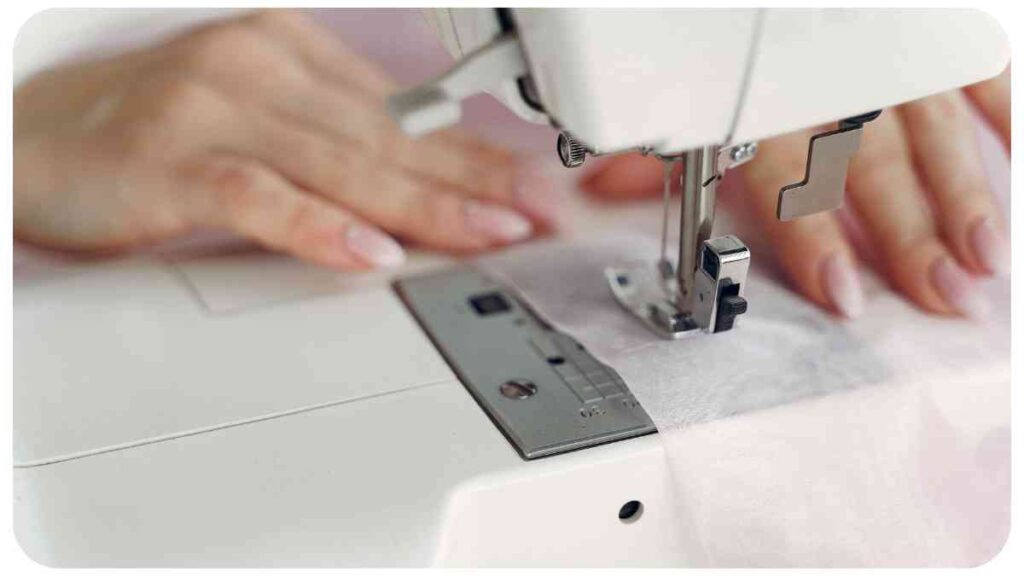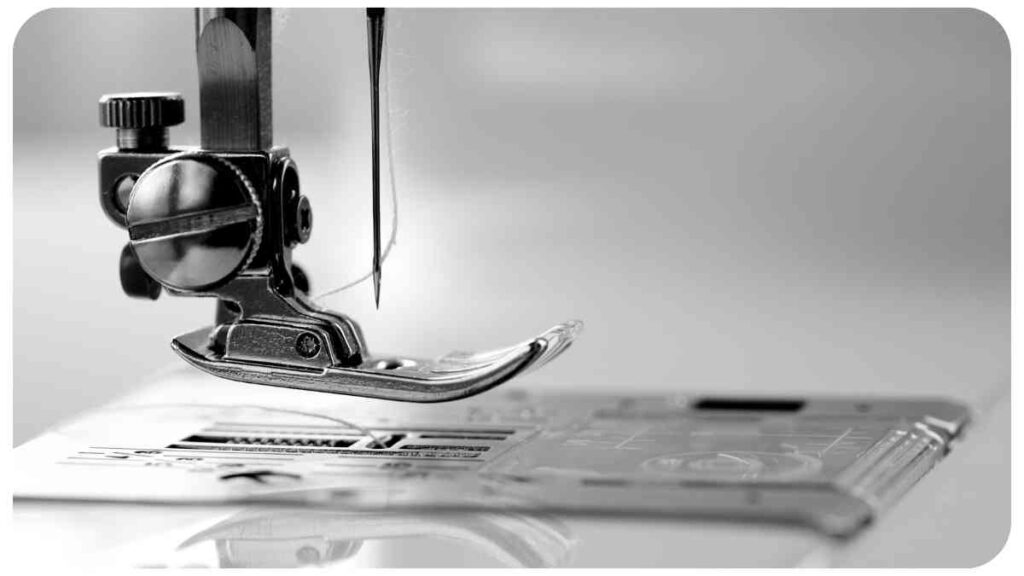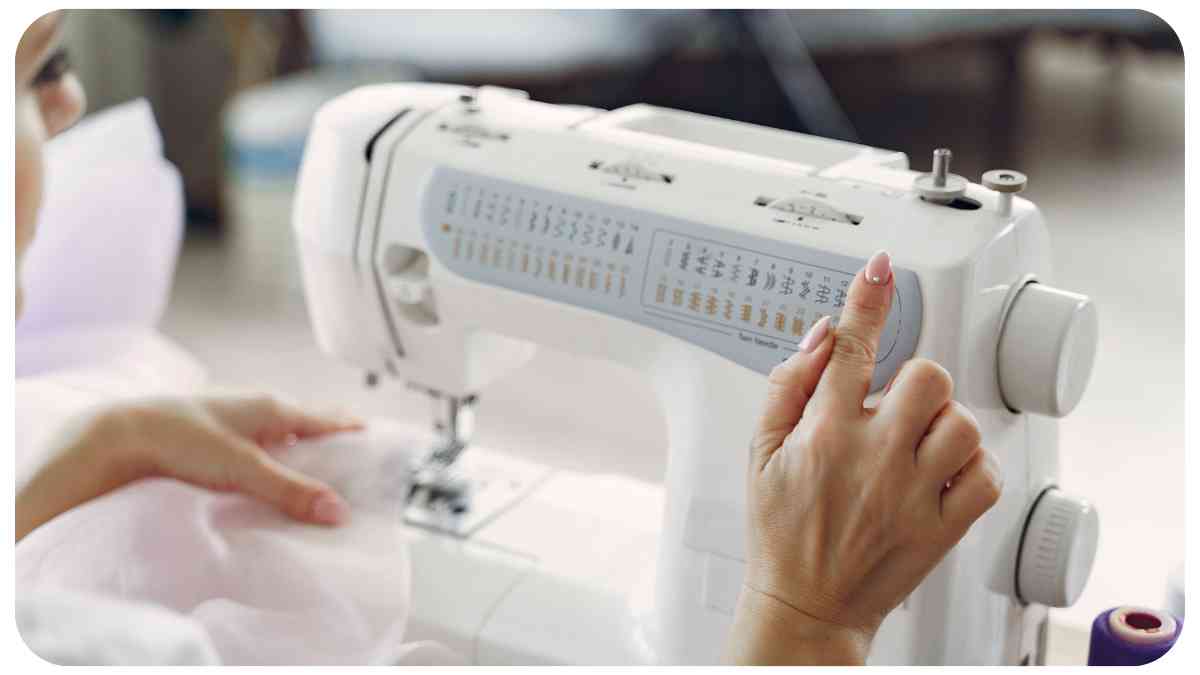Welcome to this comprehensive guide on troubleshooting your sewing machine. As an experienced seamstress, I understand the frustration that arises when your sewing machine encounters problems. In this article, I’ll share my expertise on common issues that you may encounter and provide practical solutions to fix them.
By following the guidelines and tips provided, you’ll be able to overcome these challenges effectively and get back to your sewing projects in no time.
| Takeaways |
| Troubleshooting sewing machine issues requires a systematic approach. |
| Understanding common thread, needle, bobbin, and machine-related problems is essential. |
| Follow specific steps for each issue, such as adjusting tension, rethreading, and cleaning the machine. |
| Consult the sewing machine’s manual or seek professional help if unsure or if the problem persists. |
| By effectively troubleshooting, you can ensure a smooth and enjoyable sewing experience. |
Common Sewing Machine Issues and Fixes
Before diving into the specific troubleshooting steps, let’s overview the most common sewing machine problems and their corresponding solutions.
| Issue | Fix |
| Thread tension problems | Adjust the tension settings or rethread the machine |
| Thread breakage | Check for burrs, knots, or damaged thread |
| Uneven stitching | Inspect the bobbin, needle, and thread tension |
| Thread bunching or looping | Rewind the bobbin, clean the machine, or adjust tension |
| Bent or blunt needle | Replace the needle |
| Needle breakage | Use the correct needle size and avoid sewing thick layers |
| Skipped stitches | Reinsert the needle, adjust tension, or clean the machine |
| Needle threader malfunction | Ensure correct usage and inspect for any obstructions |
| Bobbin tension issues | Adjust the bobbin tension screw |
| Bobbin thread jamming | Remove the bobbin case and clean the area |
| Incorrect bobbin placement | Place the bobbin correctly into the bobbin case |
| Feed dogs not working | Check for obstructions and adjust feed dog settings |
| Machine not powering on | Confirm the power supply and check the foot pedal |
| Loud or unusual noises while sewing | Oil the machine, tighten loose parts, or consult a professional |
Now that you have an overview, let’s dive into more detail on each of these issues and their respective fixes, with steps to troubleshoot and resolve them effectively.
“If you want salon-quality nails at home, don’t miss this guide on achieving long and strong nails 10 Secrets to Long Strong Nails Revealed. Discover expert tips and tricks for healthy, beautiful nails in just a few simple steps.
General Maintenance and Cleaning Tips
Proper maintenance and regular cleaning are essential to ensure your sewing machine’s smooth and reliable performance. Here are some helpful tips:
- Tip 1: Always unplug your machine before performing any maintenance tasks.
- Tip 2: Remove lint and debris regularly. A small brush or a vacuum with a brush attachment can be used for cleaning.
- Tip 3: Lubricate the machine following the manufacturer’s recommendations to reduce friction and prevent jamming.
- Tip 4: Store your machine in a dust-free and dry environment to avoid accumulation of dirt.
These simple maintenance practices will keep your sewing machine running smoothly and help prevent many common issues.
Recommended Cleaning Schedule

To give you a clear maintenance routine, refer to the table below for recommended cleaning tasks and their frequency.
| Maintenance Task | Frequency |
| Removing lint and debris | After each sewing session, and at least once a month |
| Lubricating moving parts | As recommended by the sewing machine manufacturer |
| Deep cleaning and oiling | Every 6 months to a year, depending on usage |
| Checking and replacing needles | After every |
Thread-Related Problems and Solutions
Knowing how to troubleshoot thread-related issues is crucial for a smooth sewing experience. Let’s explore some common problems and their fixes:
Have a broken eyeshadow palette? Don’t worry, we’ve got you covered with step-by-step instructions on how to restore it to perfection How to Fix a Broken Eyeshadow Palette: A Step-by-Step Guide. Say goodbye to wasted makeup and learn how to salvage your favorite shades with ease.
Tension Issues
When you notice uneven or tight stitches, thread tension may be the culprit. Here’s what you can do to fix it:
- Start by rethreading the top thread. Ensure the thread is properly seated in the tension discs and the thread path is correct.
- Adjust the tension settings gradually. If the stitches are too tight, decrease the tension; if they’re too loose, increase it.
- Test sew on scrap fabric until you achieve balanced stitches.
| Issue | Fix |
| Uneven or tight stitches | Rethread, adjust tension settings |
| Loose or loopy stitches | Increase tension, check for correct threading |
| Skipped stitches | Adjust tension, change needle |
| Needle thread breaking or fraying | Check the thread quality, change needle |
Thread Breakage
Thread breakage can be frustrating, but there are several steps you can take to address this issue:
- Check the thread quality. Poor-quality or old thread can break easily.
- Examine the needle. A dull or bent needle can lead to thread breakage.
- Ensure the thread is correctly threaded through the eye of the needle and the thread path.
- Adjust the tension slightly. A too-tight tension can cause thread breakage.
- Clean the machine and remove any tangled thread or lint.
| Issue | Fix |
| Thread breaking or fraying | Check thread quality, adjust tension |
| Thread getting tangled | Clean machine, rethread, adjust tension |
| Thread knotting or looping | Check thread quality, rethread, adjust tension |
Uneven Stitching
If you notice your stitches are uneven, here are a few troubleshooting steps to take:
- Ensure the bobbin is correctly wound and inserted.
- Check the needle. A bent or blunt needle can cause uneven stitching.
- Adjust the thread tension gradually, testing stitches on scrap fabric.
- Clean the machine, removing any lint or debris that may affect the stitching.
| Issue | Fix |
| Uneven stitch length | Check bobbin, needle, and thread tension |
| Skipped stitches | Reinsert the needle, adjust tension, clean machine |
| Stitches not formed correctly | Check bobbin, needle, and thread tension |
Thread Bunching or Looping
When the thread forms loops or bunches underneath the fabric, it’s essential to troubleshoot the issue. Consider the following steps:
- Rewind the bobbin. A poorly wound bobbin can lead to thread bunching.
- Check the bobbin tension. Adjust it if necessary following your machine’s instructions.
- Clean the machine, ensuring there is no lint or debris causing the thread to loop.
Is your flat iron giving you trouble? Learn how to troubleshoot common issues and find effective fixes to keep your hair styling routine smooth and hassle-free Troubleshooting Your Flat Iron: Tips and Fixes. Say goodbye to frizzy or damaged hair caused by malfunctioning flat irons
| Issue | Fix |
| Thread bunching or looping | Rewind bobbin, adjust bobbin tension, clean machine |
| Thread getting tangled | Rethread, adjust tension, clean bobbin case |
| Thread forming loops on the top | Check bobbin placement, adjust tension, clean machine |
Continuing the thread of troubleshooting, let’s move on to needle-related problems and solutions.
Needle-Related Problems and Solutions
The needle is a critical component of your sewing machine. Problems with your needle can result in stitching issues. Let’s explore some common needle-related problems and their fixes:
Bent or Blunt Needle
A bent or blunt needle can lead to various stitching issues. It’s important to replace the needle if you notice any of the following:
- Skipped stitches
- Puckered fabric
- Broken or frayed threads
- Unusual noises while sewing
Replacing the needle with a new, appropriate one for your fabric type can often resolve these issues.
Needle Breakage
Needle breakage can occur for several reasons. Here’s what you can do if you experience this problem:
- Check the needle size. Using the correct needle thickness for the fabric is crucial.
- Avoid sewing multiple layers or thick materials that might exceed the needle’s capabilities.
- Don’t force the fabric through the machine. Let the feed dogs guide it steadily.
Choosing the right needle and sewing with care can prevent needle breakage and ensure smooth stitching.
Struggling with stains on your white clothes? Check out our quick and easy guide to removing stains and keeping your whites bright Removing Stains from White Clothes: A Quick and Easy Guide. Say goodbye to stubborn stains and restore the pristine look of your favorite garments.
Skipped Stitches
Skipped stitches can be frustrating, but they often have simple solutions. Consider the following steps to address this issue:
- Reinsert the needle. Sometimes the needle may not be properly seated, causing skipped stitches.
- Check the tension settings. A too-tight tension can also lead to skipped stitches.
- Clean the machine, removing any lint or debris that may obstruct the needle’s movement.
- If the issue persists, try switching to a needle with a ballpoint tip or a different needle size.
By following these steps, you can eliminate skipped stitches and achieve consistent and neat stitching.
Needle Threader Malfunction

A needle threader can be a handy tool, but it may occasionally malfunction. If you’re facing problems with your needle threader, consider the following troubleshooting steps:
- Ensure you’re using the needle threader correctly, following the machine’s instructions.
- Check for any obstructions or tangles in the threader mechanism and clean it if necessary.
- If the threader continues to malfunction, consider manually threading the needle using a hand-held needle threader or threading it by hand.
Taking these steps can help overcome needle threader issues and allow you to thread the needle seamlessly.
Great job! So far, we have covered thread-related issues and needle-related problems. Now, let’s move on to troubleshooting common bobbin-related problems.
Bobbin-Related Problems and Solutions
Bobbin problems can cause disruptions in your sewing journey. Let’s explore some frequently encountered bobbin-related issues and their fixes:
Bobbin Tension Issues
When the bobbin tension is misaligned, it can affect the stitching quality. Here’s how you can troubleshoot this problem:
- Check the bobbin tension screw. If it appears loose or too tight, adjust it accordingly.
- Adjust the top thread tension if necessary to achieve balanced stitches.
- Test sew on scrap fabric to ensure the tension is correctly adjusted.
By fine-tuning the bobbin tension, you can attain consistent and high-quality stitching.
Bobbin Thread Jamming
If the bobbin thread keeps jamming or getting tangled, try the following steps to resolve the issue:
- Remove the bobbin case from the machine and clean any lint or debris.
- Check the bobbin itself. Ensure it is wound properly and doesn’t have any thread loops or knots.
- Verify that the bobbin is inserted correctly into the bobbin case according to your machine’s instructions.
- Adjust the tension of the bobbin case if needed, following your machine’s guidelines.
By addressing these issues, you can prevent bobbin thread jamming and enjoy uninterrupted sewing sessions.
Incorrect Bobbin Placement
Incorrect bobbin placement can lead to stitching problems. To troubleshoot this issue, follow these steps:
- Check the bobbin placement in the bobbin case. Ensure it is correctly positioned and rotates freely.
- Rethread the top thread, making sure it properly engages with the bobbin thread.
- Adjust the tension settings, both for the top thread and the bobbin thread, if necessary.
By properly placing the bobbin and correctly aligning the tension, you can avoid stitching issues caused by incorrect bobbin placement.
Great work so far! We have covered thread-related, needle-related, and bobbin-related problems. Now, let’s explore troubleshooting solutions for machine-specific issues.
If you own leather boots, it’s essential to maintain their appearance and durability. Our comprehensive guide provides valuable tips and techniques to keep your leather boots looking their best Maintaining Your Leather Boots: A Comprehensive Guide. From cleaning and conditioning to storage, discover the secrets of proper boot care.
Machine-Specific Problems and Solutions
While some problems may be common across different sewing machines, others can be specific to the machine model or brand. Here are some common machine-specific issues and potential fixes:
Feed Dogs Not Working
The feed dogs are responsible for moving the fabric through the machine. If they’re not working properly, follow these steps:
- Check for any obstructions. Remove any thread snags, lint, or debris from the feed dog area.
- Ensure the feed dog settings are correctly adjusted. Refer to your machine’s manual for guidance.
- If the feed dogs are still not functioning, it’s recommended to seek professional assistance or consult the machine manufacturer.
By addressing feed dog issues promptly, you can ensure smooth and even fabric feeding.
Machine Not Powering On
If your sewing machine isn’t powering on, you can troubleshoot the issue using the following steps:
- Check the power supply. Ensure the plug is securely connected and there is a functioning power source.
- Inspect the foot pedal. Make sure it’s connected properly and in good working condition.
- If the machine still doesn’t power on, consult the machine’s manual or seek assistance from a professional.
Ensuring a proper power connection is vital for the machine to function correctly.
Loud or Unusual Noises while Sewing
If you notice unusual noises coming from your sewing machine while you’re sewing, consider these troubleshooting
steps:
- Stop sewing immediately when you hear unusual noises. Continuing to sew could potentially cause further damage.
- Check for any obstructions or tangled threads in the machine’s throat plate, bobbin area, or needle area.
- Remove any debris, lint, or tangled threads using a small brush or tweezers.
- Make sure all screws, nuts, and bolts on the machine are securely tightened.
- If the noise persists, it is advisable to consult a professional technician or contact the machine manufacturer for assistance.
Addressing loud or unusual noises promptly can help prevent additional damage to the machine and ensure its longevity.
Overall, troubleshooting sewing machine issues encompasses troubleshooting thread-related problems, needle-related problems, bobbin-related problems, and machine-specific problems. By following these steps and taking appropriate actions, you can resolve common sewing machine issues and enjoy a smooth and productive sewing experience.
Remember, it’s always a good idea to consult your sewing machine’s manual or seek professional help if you are unsure about any specific troubleshooting steps or if the problem persists.
Conclusion
In conclusion, troubleshooting sewing machine issues requires a systematic approach to identify and address the specific problems. By understanding common thread, needle, bobbin, and machine-related issues, you can effectively troubleshoot and resolve these problems. Remember to follow the appropriate steps for each issue, such as adjusting tension, rethreading, cleaning the machine, and replacing the needle when necessary.
It’s important to consult your sewing machine’s manual or seek professional help if you are unsure or if the issue persists. With proper troubleshooting techniques, you can ensure a smooth and enjoyable sewing experience. Happy sewing!
Further Reading
Here are some additional resources to further explore troubleshooting sewing machine issues:
Top 10 Sewing Machine Troubleshooting Tips: This article provides valuable tips to troubleshoot and resolve various common sewing machine problems.
17 Common Sewing Machine Problems and Solutions: Discover a comprehensive list of 17 common sewing machine problems along with their solutions in this blog post.
Sewing Machine Troubleshooting: Problems and Solutions: This resource offers a detailed guide on troubleshooting various sewing machine problems, providing step-by-step solutions.
FAQs
How do I rethread my sewing machine?
To rethread your sewing machine, follow these steps:
- Raise the presser foot and turn off the machine.
- Cut the thread near the spool, then remove the old thread from the machine.
- Thread the new thread through the machine’s threading pathway, following the machine’s manual.
- Make sure the thread is properly seated in the tension discs and the needle’s eye.
- Pull the thread to the back of the machine, leaving a few inches of thread tail.
Why does my sewing machine stitch unevenly?
Uneven stitching can be caused by various factors. Some common causes include:
- Incorrect thread tension settings.
- A bent or dull needle.
- Improperly inserted bobbin.
- Feed dog issues. Make sure to check these factors and adjust as needed to achieve even stitching.
How often should I clean my sewing machine?
Regular cleaning is important to maintain the optimal performance of your sewing machine. It is recommended to clean your machine after every project or at least once a month if you use it frequently. Proper cleaning includes removing lint, dust, and debris from the bobbin area, needle plate, and other accessible parts using a brush or vacuum.
Why is my sewing machine not sewing forward or backward?
If your sewing machine is not sewing forward or backward, check the following:
- Ensure the machine is properly threaded and the bobbin is inserted correctly.
- Check if the stitch length setting is appropriate for forward or reverse stitching.
- Examine the reverse lever or button to ensure it’s not stuck or locked.
- If the issue persists, consult your sewing machine’s manual or seek professional assistance.
How do I choose the right needle for my project?
Choosing the right needle is crucial for successful sewing. Consider the fabric type and weight when selecting a needle. Use smaller needle sizes for lightweight fabrics and larger needle sizes for heavier fabrics. Ballpoint needles are suitable for knits, while sharp needles work well with woven fabrics. Always refer to your sewing machine’s manual or consult a needle guide for more specific recommendations.

Hi, you! I’m Hellen James. I’m a beauty and fashion writer who loves to make the world a little more stylish and I’d love for you to join me in the fun! I’ve been writing about beauty and fashion since I was a kid, but it wasn’t until recently that I really knew what it meant to be a real expert.

